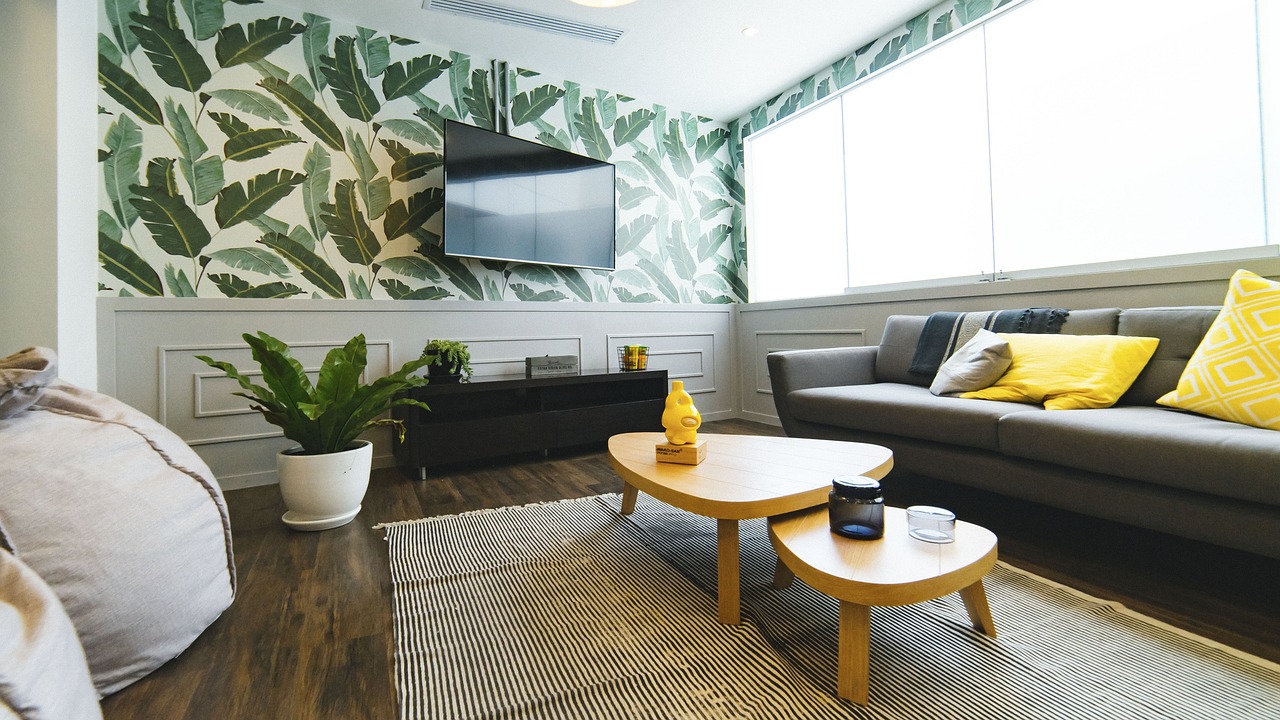Are you tired of staring at dull, plain walls? Are you yearning for a change that will breathe new life into your living space? Look no further! Installing wallpaper is an excellent way to add personality, color, and texture to any room. In this comprehensive guide, we will walk you through the process of how to install wallpaper like a pro.
From selecting the right wallpaper to preparing the walls and applying the paper, we’ve got you covered. So, let’s dive in and transform your space with stunning wallpaper!
Table of Contents
Gather Your Materials
Before you embark on your wallpaper installation journey, it’s essential to gather all the necessary materials.
Here’s a list of items you’ll need:
- Wallpaper (ensure you have enough rolls to cover the desired area)
- Wallpaper adhesive or paste
- Wallpaper brush or roller
- Utility knife or scissors
- Measuring tape
- Level
- Smoothing brush or squeegee
- Drop cloths or plastic sheets
- Sponge or damp cloth
- Step ladder
- Wallpaper removal tools (if applicable)
Having all your materials ready before you start will make the installation process smoother and more efficient. If you don’t want to buy so many things and would like to save time, then look for a specialist in Saint Augustine: Wallpaper installation near me
Prepare the Walls
Before you can begin hanging wallpaper, proper wall preparation is crucial. Follow these steps to ensure a clean and smooth surface for optimal wallpaper adhesion:
- Start by removing any existing wallpaper. Use a wallpaper removal solution and a scraper to gently peel off the old wallpaper. Be careful not to damage the wall underneath.
- Fill in any holes or cracks with spackling compound and smooth the surface with sandpaper. This step will ensure a flawless finish.
- Clean the walls using a mild detergent and warm water. This will remove any dirt, grease, or residue that could interfere with the wallpaper’s adhesion.
- If the walls were previously painted with a glossy finish, lightly sand them to create a rough surface. This step helps the wallpaper adhesive bond better.
Measure and Cut the Wallpaper
Accurate measurement and cutting are vital for a seamless wallpaper installation. Follow these steps to measure and cut your wallpaper correctly:
- Measure the height of the wall from floor to ceiling and add a few inches for trimming.
- Unroll the wallpaper and lay it flat on a clean surface with the pattern side down.
- Using a measuring tape, mark the required length on the back of the wallpaper, allowing for pattern matching if necessary.
- Cut along the marked line using a sharp utility knife or scissors. Take your time to ensure a clean and precise cut.
Apply the Wallpaper Adhesive
Wallpaper adhesive is crucial for ensuring the wallpaper sticks firmly to the wall. Follow the manufacturer’s instructions on the adhesive package for the best results. Here’s a general overview of the process:
- Prepare the wallpaper adhesive according to the instructions provided. Some adhesives require mixing with water, while others come ready to use.
- Use a paint roller or brush to apply the adhesive evenly to the back of the wallpaper. Ensure complete coverage but avoid excessive soaking.
- Fold the wallpaper, adhesive-side in, in a concertina fashion. This technique, known as “booking,” allows the adhesive to activate without drying out.
- Let the booked wallpaper rest for the recommended time specified by the adhesive manufacturer.
Hang the Wallpaper
Now comes the exciting part—hanging the wallpaper! Follow these steps for a smooth and successful installation:
- Start at the top corner of the wall and carefully unfold the top section of the booked wallpaper. Align it with the ceiling or top edge, leaving a slight overhang for trimming later. So we start wallpapering from the corners and edges, like interior wall painting.
- Smooth the wallpaper against the wall using a wallpaper brush or roller. Work from the center outwards to eliminate air bubbles and ensure proper adhesion.
- Continue unfolding the wallpaper and smoothing it down, section by section, working your way across the wall. Take care to match the pattern seamlessly as you go.
- Use a sharp utility knife or scissors to trim the excess wallpaper along the baseboard or skirting board. A straight edge or ruler can help you achieve clean, precise cuts.
- Repeat the process for each subsequent strip of wallpaper, ensuring proper alignment and pattern matching. Take your time to ensure a professional finish.
Smooth Out Air Bubbles and Wrinkles
Despite your best efforts, air bubbles and wrinkles may occasionally appear during the wallpaper installation. Don’t panic! Here’s how to address them:
- Gently lift the affected section of wallpaper with a smoothing brush or squeegee.
- Smooth out the air bubble or wrinkle by applying light pressure from the center towards the edges. Work in a gentle, sweeping motion to avoid damaging the wallpaper.
- If necessary, use a small pin to puncture any persistent air bubbles and smooth them out.
Clean and Maintain
Congratulations! You’ve successfully installed your wallpaper. To keep it looking its best, follow these tips for cleaning and maintenance:
- Regularly dust the wallpaper using a soft brush or feather duster to remove any accumulated dirt or debris.
- If there are any stains or marks, gently dab the area with a damp sponge or cloth. Avoid using abrasive cleaners that may damage the wallpaper.
- In high-traffic areas or areas prone to splashes or spills, consider applying a clear wallpaper protector or sealer for added durability.





